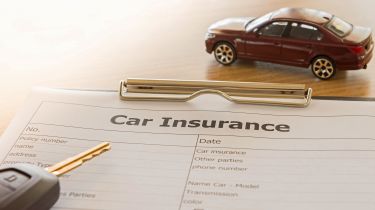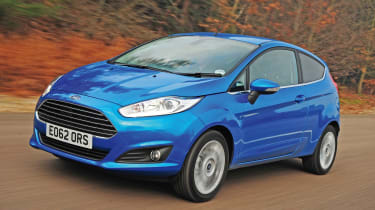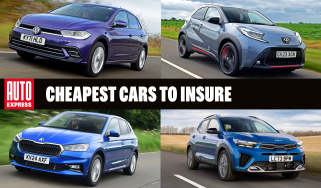UK car insurance groups explained: what do they mean for you and your car?
The Association of British Insurers decides your car’s insurance group, from one to 50. Here’s what it means for you…

Car insurance premiums can be one of the more expensive elements of owning a car, but it’s not something you can avoid paying for, because driving on the public road without valid insurance is illegal. Understanding what and how car insurance groups impact your insurance premium can go a long way to saving you money when you renew. Thankfully, insurance groups are easy to understand and this guide will outline everything you need to know about a car’s insurance group and what it means for you.
Car insurance groups are determined and calculated by the Association of British Insurers (ABI). The ABI takes steps to rate individual cars for their risk levels and then gives them a group rating from one to 50, with one being the lowest insurance group and 50 being the highest. However, the current car insurance group ratings system on new cars is being replaced by a new Vehicle Risk Ratings (VRRs) system. The VRRs will gradually supersede the 1-50 insurance group system with a more detailed rating for insurance risk across five assessment categories, but the older 1-50 group ratings will continue to apply to cars launched before autumn 2024.
Of course, your car isn’t the only factor taken into account by insurers when calculating your car insurance quote. You as an individual and your circumstances (like your age, driving experience, job title, where you live and park your car) are all contributing factors, too, although driving a car in a lower insurance group will help keep costs down right from the start.
What are car insurance groups?
Car insurance groups are one of the more straightforward tools the insurance industry uses to set your premiums. They were first introduced in the 1970s, to help simplify the process of getting quotes, and to help the industry judge the risk involved when setting premiums.
Insurance groups are fixed independently of the car manufacturers, and are based on assessments by the Association of British Insurers (ABI) of how easily and cheaply repairs can be carried out after an accident, and the level of vehicle performance as an indicator of the potential for having the accident in the first place.
The original group ratings were from one to 20, but from 2009 the broader insurance group ratings of one to 50 were used. This provided more scope to award different ratings to different specs and trims within car model ranges. So more expensive or higher-performance versions of a model will cost more to insure. As you would expect, the higher the insurance group rating, the more expensive your premium is likely to be.
In September 2024, the new Vehicle Risk Rating (VRR) insurance group system was introduced and began to be applied to new cars. It will not be applied retrospectively, so cars already on sale are still covered by the old 1-50 group system.
Vehicle Risk Ratings rate a car's insurance risk from one to 100 across five different categories:
- Performance
- Damageability
- Repairability
- Safety
- Security
These five categories are designed to give a much clearer picture of the factors that influence the insurance costs that motorists pay. While the VRR ratings are in use now and new cars are being evaluated under the framework, the ratings will become publicly available from early in 2025 once a larger number of cars has been assessed.
How are car insurance groups calculated?
The ABI works in conjunction with Thatcham to compile the insurance classifications for UK cars. The two main areas of research are how much damage a car sustains in a collision and how cheap and easy it is to repair after an incident. The experts factor in a number of points when setting an insurance group, including:
- Parts availability and price: For repair purposes, Thatcham uses a list of 23 commonly damaged parts for pricing, in the same way the Treasury's basket of goods is used to calculate inflation.
- Performance: The manufacturer-quoted 0-62mph acceleration figure and top speed of a specific car are taken into account.
- Repair costs: Thatcham performs its own low-speed crash tests (chiefly a 15km/h impact), and engineers determine the cost of parts and labour to return a car to its pre-accident condition.
- Price when new: The vehicle list price is used to calculate the cost of a settlement if the car is written off.
Data for these comes from Thatcham's own tests, although in the case of parts and labour these prices are sourced directly from the vehicle manufacturer.
Once all of these factors are taken into account, Thatcham then classifies each new car into insurance groups, and then a further security rating is given. At the top end, cars with excellent security features can move into a lower insurance group, while vehicles with poor security are placed into a higher group and therefore the cost of insurance is increased.

What else determines a car's insurance group?
According to the New Vehicle Security Assessment programme, vehicle theft is still one of the chief reasons for an insurance claim, so the security of a vehicle will qualify it for a lower insurance premium. Thatcham breaks down cars with the following suffixes after a car's insurance group number:
- E: Exceeds the security requirement for the type of car, so the insurance group rating has been lowered.
- A: Acceptable level of security for the type of car.
- D: Doesn't meet security requirements for the type of car, so the insurance group rating has been raised.
- U: Unacceptable standard of security. An insurer may insist on upgraded aftermarket security before they agree to cover the vehicle.
- P: Provisional. Not enough data is available at the time of launch to classify the car. This will likely be amended once a new car has become available for Thatcham to evaluate.
- G: Grey import. Thatcham only tests cars that are officially sold in the UK, so imports are only evaluated at a price that the insurer sets.
As mentioned above, security ratings can increase or decrease a car's overall insurance group. A group eight car with an excellent security rating will be moved down to group seven, and rated as 7E. Conversely, a group eight car with a poor security score will be moved up to group nine, and rated as 9D.
Another way for a car to improve its insurance group rating is by offering a high standard of safety. If autonomous emergency braking is fitted as standard, for example, a vehicle can drop one group once it's been tested by Thatcham. Other advanced active safety aids can also have a positive effect on the insurance grouping of a car, as long as they are standard-fit equipment.
Manufacturers play a further part in determining insurance costs. High parts prices or labour rates at dealerships are taken into account when deciding a car's grouping. So if one manufacturer's dealers are more expensive, its cars could creep up the scale - even in cases where cars are mechanically similar. For example, the Audi A3 and Skoda Octavia.

Different versions of the same car will also be in a range of insurance groups, because engine performance and trim levels affect premiums. A base-level Ford Fiesta Trend fitted with the 1.0-litre 94bhp EcoBoost engine is in group 10, but the same car in ST-Line X trim with the 138bhp 1.0-litre EcoBoost engine is in group 15.
How do car insurance groups affect me?
Broadly speaking, the higher the car insurance group, the more expensive insurance will be. Don’t think because a car is in a lower insurance group that it will be a cheap, stripped back model which lacks any in-car equipment, because some of the cheapest cars to insure currently on the market are also some of the best cars in their class.
However, it’s not quite as simple as that. Insurers aren’t bound to follow the ABI guidelines that Thatcham sets, and will use their own judgement and experience to decide how much to charge customers. For example, a stereotypical ‘boy racer’ car will attract a higher premium than one that’s more staid and sensible – even though the two vehicles might be in the same insurance group.
This can hit young drivers especially hard - with cars that a 17-year-old can afford to buy and run very likely to have their insurance costs pushed up even further. This occurs because the insurer will have past experience with these cars being more frequently involved in collisions.
That's why it’s important that insurance groups aren’t the only factor when choosing a new car. Be sure to obtain actual car insurance quotes by using an insurance comparison site or calling up insurers rather than simply comparing insurance groups – you might be surprised how much two similar cars can differ on insurance costs. As with many things, the most effective thing to do here is to research thoroughly. It could be worth paying a little extra in terms of insurance cost for a car that will save money elsewhere – with excellent fuel economy or low running costs, for example.
What cars are in the lowest insurance groups?
As you might imagine, it’s small city cars and hatchbacks which are cheap to buy and repair that populate the lower car insurance groups in the scale. In groups one to three, you’ll find models such as the Kia Picanto, Hyundai i10 and Volkswagen Polo, but it’s crucial to remember that insurance group placement is determined according to the specific model, engine and trim level you’re buying. While the cheapest, least powerful Volkswagen Polo might be in insurance group three, the more expensive, better equipped and faster models that you’ll encounter as you climb the range will be in progressively higher groups, attracting bigger insurance costs.
What cars are in insurance Group 50?
Bearing in mind that it’s cheaper cars in the lowest insurance groups, there are no prizes for guessing the kind of cars in insurance group 50. Top-end luxury saloons, SUVs and sports cars get the highest insurance grouping, but owners of cars such as the Bentley Bentayga, Audi R8 and Mercedes-AMG GT will probably have the cash to shoulder the extra insurance burden. At the very top end of the market, owners of exotic supercars from Ferrari, Lamborghini and even more exclusive brands will often employ the services of an insurance broker to help keep the cost of insurance in check.
Let us take the effort out of searching for cars in low insurance groups. Read our list of the cheapest cars to insure in the UK
Find a car with the experts










